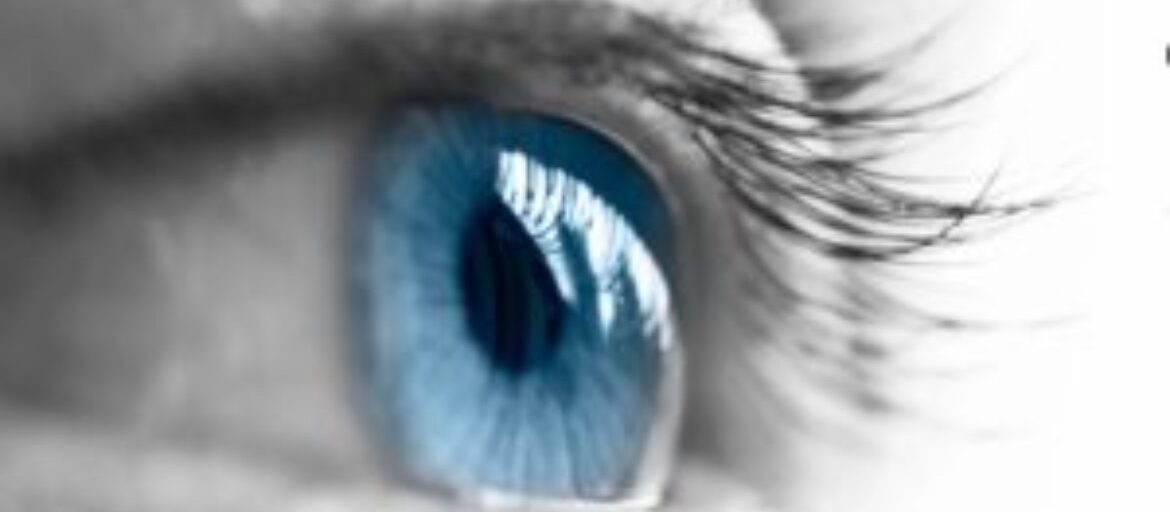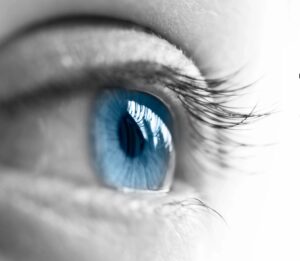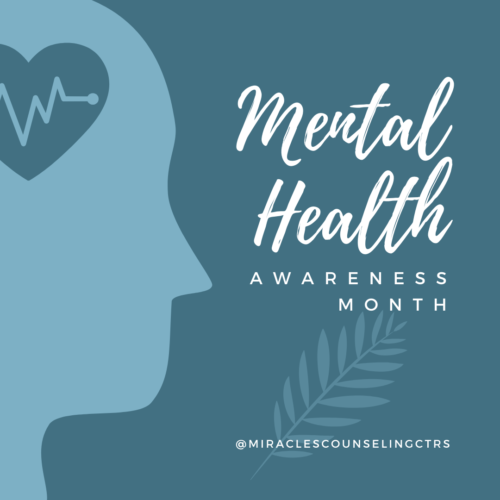
Why is Depression so hard to recognize?
According to Gallup, 29% of American adults have been diagnosed with depression in their lifetime (up 8% since 2018). Depression has likely been present in humans since the beginning, however the prevalence of depression has been on the rise in recent history likely due to destigmatization, the emergence of new studies, and increased access to resources such as therapy and other mental health providers. Although the numbers surrounding depression have become more clear, there is still a large population of people that are experiencing depressive symptoms that are unaware that depression is what they are experiencing due to its deceptive nature. This is why depression is so hard to recognize.
But we all get sad sometimes, right?
One of the most deceptive aspects of depression is its talent for manifesting as seemingly ordinary emotions or experiences. It is normal to have feelings of sadness, fatigue, disinterest, and overall lack of enjoyment in things that you previously did. It is easy to dismiss them as fleeting moods or momentary setbacks. However, if you are noticing these emotions persist for an extended period and begin to interfere with your daily life, they may be indicative of a deeper issue. Because of the long term persistance of these symptoms, it is easy to not realize the depth of impact they are holding over you.
Additionally, despite significant strides in mental health awareness, stigma is still a present force that holds people back from opening up discussions about their mental health.. Many individuals hesitate to acknowledge their struggles due to fear of judgment or perceived weakness. This reluctance to confront the issue head-on can perpetuate a cycle of denial, making it even harder to seek help. Realizations in life are often found in conversations with others, and stigma makes it difficult for some to initiate conversations surrounding mental health.
The Mask of Emotional Numbness
Depression has a way of numbing the senses, dulling the ability to experience emotions fully. This emotional numbness can make it challenging to recognize and articulate feelings of despair or hopelessness, as the capacity for self-awareness becomes clouded by a sense of apathy.
Depression Coping Mechanisms
In an attempt to cope with internal turmoil, you could be grappling with depression in order to develop coping mechanisms that serve as protective shields. Whether it’s putting on a brave face in social situations or burying oneself in work to distract from inner turmoil, these coping strategies can create an illusion of normalcy, further obscuring the reality of depression and preventing those around them from noticing changes in appearance or behavior.
Furthermore, societal and cultural norms and expectations have significantly impacted our awareness of how depression is experienced. Men are often taught as young boys not to cry otherwise they are being “babies” or are weak. In East Asian cultures, depression is experienced in more somatic presentation such as body aches or fatigue, while in Latin American cultures depression might be expressed through symptoms of “nervios” (nervousness) or “ataques de nervios” (attacks of nerves), which include a mix of emotional and physical symptoms such as trembling, crying, and chest pain. How we learn and identify depression varies from family to family, and culture to culture.
The Vicious Cycle of Self-Doubt
Depression often breeds self-doubt, whispering mistruths about one’s worth and capabilities. This internal dialogue can distort perceptions of reality, leading individuals to question the validity of their emotions and downplay the severity of their struggles to both themselves and others. In the absence of external validation and opinion, it becomes increasingly difficult to trust one’s own judgment and acknowledge the presence of depression.
Depression Varies Based on Age
Identifying child and adolescent depression is difficult because the symptoms vary from those in adults. Unlike the classically depressed adult, who reports low energy sadness, and hypersomnia or insomnia, a depressed adolescent is more likely to manifest a decreased interest in formerly pleasurable activities and irritability A practitioner looking for the lethargic, weepy, and expressively depressed patient may be misled by the irritable adolescent.
Self-destructiveness is also a classic marker for depression in youth. Many studies have found that psychiatric disorders in adolescents, especially major depression, make high-risk sexual behaviors and substance abuse more likely.
The Importance of Seeking Support
You can break free from the grip of depression beginning with acknowledging its presence and reaching out for support. Whether through therapy, medication, or the support of loved ones, there are various avenues for healing and recovery. However, this journey can only commence once the veil of denial is lifted and the truth of one’s condition is confronted with courage and honesty.
In conclusion, the confusing aspects of depression lie in its ability to hide itself, making it hard for individuals to recognize the signs within themselves. By shedding light on this phenomenon and fostering open dialogue about mental health, we can work towards dismantling the barriers that prevent people from seeking the help they need. Remember, you are not alone, and there is hope and support available to guide you through difficult times towards a brighter tomorrow.
Therapists at Miracles Counseling Centers are very skilled in helping you to recover from depression. Please reach out to us to set up an appointment if you need guidance and support in this process.
Learn More

How to manage a setback in healing your trauma
Many of our therapists are trauma treatment specialists, and one thing that is often seen by them are set backs in the healing process from trauma. Whether it stems from a recent personal crisis or upheaval of one’s life routine, these things can feel like your entire world is falling apart again. What is critical is to remember that setbacks are normal and can actually be a part of the healing experience. When giving yourself a little grace and continued hopeful effort, you will see yourself finding yourself on the healing journey again.
How to manage a setback in healing trauma?
- Allow yourself to feel it.
In any setback of life, it is important to feel and acknowledge the emotions that come with it. Disappointment, shame, anger, and confusion are common emotions to have when you find yourself falling backwards from progress. While some of the emotional experiences you may be having are similar to what you went through in the past, they may provide you with useful information on what areas of yourself may need further attention. Give yourself some grace in having these emotions, and share your observations with your therapist.
- Reflect & Begin Again
Spending time reflecting to understanding how the circumstances of this event may help you to recognize patterns or poor boundaries that you may need to examine and reset your life. Try being curious and open to observing the situation without preexisting assumptions or judgements so you can gain these insights. This new level of self awareness can be powerful and jumpstart your again on a healthy, healing path.
- Connect with Supports
Healing from a trauma requires support in all forms. Friends, family, or professional counselors give you the opportunity to receive comfort and validation in your healing journey. Sharing your struggles and seeking support is a strength, not a weakness. Speaking with these confidants can provide you with new awareness, compassion, and encouragement during a difficult time.
- Decide on changes for a better future
In this setback, you may find out learning new coping skills is just what you need to manage similar situations in the future. Perhaps being more consistent in your mindfulness practices is exactly what you need, or letting go of unhealthy, toxic people in your life will give you future safety. This setback can reinvigorate your commitment to your wellness practices, and boundaries in your life!
- A time for Self-Compassion & Recognition
In this moment, it is important to practice self compassion and frame your inner voice in a compassionate, encouraging way. It is normal to struggle at times in life and your inner voice should not be shaming or criticizing yourself right now. Recognize the gains you have made in your life up to this point. This will help you to foster a positive growth mindset and continue to acknowledge to yourself that healing is an ongoing process with its own sets of ups and down.
The healing journey can be a winding road of ups and downs, but with supportive outlets and commitment to healing you will find your way beyond the past and into your future. Continue the journey with one of our skilled clinicians, you can find a well matching therapist for you by visiting our clinicians page.
Learn More

Learning to Identify Your Emotions: A Path to Emotional Recovery
Oftentimes in my work with clients, it becomes apparent that someone does not possess adequate language for their emotions. Sometimes this is the result of growing up in a home where emotions functioned more as skeletons in the closet or as dust under the rug. Other times it develops from painful lessons in emotional danger, where vulnerability came at a cost and emotions were minimized, ridiculed, or even used as fodder for abuse. There is also a category of individuals whose emotional maturity is lacking because they bought into the cultural idea that expressing emotion is the equivalent of being a drama queen (or king) and they work hard to curate their emotions into socially acceptable displays. In each of these instances, the capacity for appropriate and healthy emotional expression is limited and for many individuals, the thought of anything else can be very intimidating.
Beginning the Path to Emotional Recovery
Before I can teach a client language for their emotions, we must first address where their conceptualization of emotions comes from and how this shapes their current comfort level with emotional expression. For example, if a client grew up with a parent whose expression of anger was generally one that was out of control, loud, full of profanity, demeaning, scary, and so forth, then allowing him/herself to feel and express anger as an adult can be extremely challenging. These individuals often perceive other people’s anger as being unsafe, as well, and project their past experiences of anger onto whatever relationship they find themselves in. While anger can certainly be expressed inappropriately, it also points to something important: It shows us what we care about. In fact, there are times when anger is appropriate and needs to be expressed before a client can move forward in their healing process. Creating a safe space for clients to explore their anger and learn that it can be expressed in a healthy, safe way is a primary goal of therapy for these individuals. As with many emotions, the crime is not in feeling anger, but monitoring how it is expressed is essential. Addressing these associations of emotion is critical to the recovery process.
Developing a Language for Your Emotions
Once a client better understands where and how his/her emotional literacy was shaped, they can begin to learn the language for their emotions. Without language to describe what we are feeling, it is very difficult to take ownership of these emotions, to process them, and to learn healthier ways of emotional regulation and expression. It is also difficult to understand why we are feeling a certain way if we do not possess the words to describe these feelings. Additionally, a lack of emotional language inhibits our ability to form meaningful connection and intimacy with others. With children and youth who are struggling to identify their emotions, I often show them the emojis on my phone and ask them to point to one that best describes how they feel. I then ask them to describe what that picture communicates to them and from there we can have a conversation about what is going on inside.
A wonderful resource for older teens and adults is Atlas of the Heart: Mapping Meaningful Connection and the Language of Human Experience by Brené Brown (2021). I like to use this book as a resource, an emotions encyclopedia, if you will. Brown has done a phenomenal job of categorizing emotions into families and helping us to better understand which emotions are connected and how, as well as teaching us more specific language for describing what we feel. For instance, did you know that resentment is part of the envy family? Did you also know it is possible (and very normal) to feel multiple emotions at once, even if they seem to be conflicting? Several years ago, I worked with a client who told me each session that she was exhausted. While this statement was not untrue (she carried the emotional and physical exhaustion of years of trauma and untreated OCD), I began to challenge her to explore this feeling further, suggesting that she might be feeling something other than exhaustion. As our work unfolded, she learned a whole variety of words to describe more accurately what she was feeling, which, in turn, allowed us to focus on the root of those feelings and achieve greater recovery and healing.
Embracing the Role and Importance of Emotional Experiences
When a client has a better understanding of their emotional development, as well as language to describe what they are feeling, I then help them to understand the role of emotions. At this point in therapy, we work on developing a certain comfort level with these emotions, which includes not judging but normalizing them. I often tell clients that emotions are one of the few equalizers in humanity—no one is exempt from having them and we cannot pretend that we are above feeling certain emotions that seem taboo or bad. In fact, there is no such thing as a “good” or “bad” emotion—they simply are. They are not meant to define us nor to guide our decisions, but to be felt. In therapy, we also practice ways of expressing emotion and releasing them in ways that are safe, healthy, respectful of other people’s boundaries, and provide resolution over time.
If you, a child, or partner is struggling with emotional expression or you find yourself stunted and afraid of letting out your feelings, you may benefit from doing some emotions work with a therapist. While it may seem daunting at first, keep in mind that learning any new skill can be uncomfortable in the beginning. However, with time and appropriate therapeutic support, you can grow this muscle and learn to be present with your emotions, as well as to hold space for others’ emotions.
Sarah Groff, LCMHC has over 22 years of experience in the mental health field, many of which have specifically focused on adoption, infertility, and working with the entire adoption triad, as well as assisting women with making a parallel plan for adoption and parenting.
Learn More
Recognizing the 7 signs of anxiety in your life
7 signs of an anxiety disorder that suggest you should visit a professional counselor.
Learn MoreOur Inner Voice Impacts to Mental Health
The Inner Voice from within….
We all have an inner voice, one that speaks to us throughout the day and helps to guide many of our decisions and behaviors. Sometimes this voice is kind and at times it is critical. This voice offers sound advice one moment and then tells us we are unworthy the next. For many people, the challenge is learning to decipher the negative self-talk that goes on in their head and to correct it with truth. This can be especially difficult to do, however, when one lacks awareness and has become accustomed to a self-critical and limiting narrative. Fortunately, it is possible to correct this chatterbox and to develop an inner voice that maintains a healthy, well-balanced perspective.
When it comes to self-talk or our inner narrative, it is helpful to think of the tone. When we read literature, for example, the narrator of the story has a certain tone, which may come from a variety of vantage points. Whether told in first- or third-person, the narrator’s voice is one of authority and frames the events and perspectives of the story. Your inner voice has the same role in that it is constantly narrating the events, interactions, and decisions of your daily life. This voice is developed in early childhood and may take many tones throughout the lifespan. For those who grew up in loving, nurturing homes, for instance, the tone of this voice may be patient or flexible. For those who have endured abuse or trauma, on the other hand, this voice may be one of self-doubt and perfectionism.
There are some helpful questions to ask yourself when first learning to distinguish the tone and vantage point of your inner voice. These include, but are not limited to, the following:
- Is the voice (or self-talk) recurring?
- Is this my voice talking or the voice of someone I know?
- Is this voice building me up or putting me down?
- Is the voice coming from a place of fear or possibility?
- Would I talk to someone I love or care about in this tone?
- Is my narrative balanced or one-sided?
- Is my self-talk based upon experience or “what-if” scenarios?
Sometimes it is helpful to journal the self-talk you engage in to begin identifying themes and tones. Unfortunately, many people are so accustomed to the negative narrative they tell themselves that they have never questioned it and do not realize it may not be accurate. Journaling these thoughts serves as a type of mirror to help build your awareness and to address thoughts that need changing. Talking to a trusted friend or family member can also be helpful so long as this person is someone who can remain relatively objective and provide loving and honest feedback. Finally, working with a therapist can also be instrumental in teaching you to identify thoughts that need adjustment, learn skills of reframing and rewriting your narrative, and develop healthy coping mechanisms to deal with daily stressors, anxiety, and depression.
Amending your self-talk isn’t just about saying nice things to yourself, although that is certainly part of it. And, it isn’t saying things that are unrealistic, a Pollyana syndrome of sorts. Rather, it is more about choosing the way in which you frame thoughts, behaviors, interactions with others, and life events. It also often includes speaking truths to yourself that you might not yet believe, such as “I am beautiful, capable, a good mom/dad, worthy, loveable, intelligent, empowered,” etc. We can choose to engage in self-talk that fuels the voice of shame in our head or we can recognize that voice, call it out, reframe it, and rewrite the narrative it speaks.
Cognitive Behavioral Therapy (CBT) and Narrative Therapy are two modalities that help to address the process described in this article. If you would like to learn more about these options and connect with a therapist who is trained in one of these approaches, please contact us. We look forward to serving you!

Written by Sarah Groff, LCHMC
Sarah has been part of the Miracles Counseling Centers team for over 5 years and treats adolescents through adults on issues of marriage and divorce, blending families, depression, anxiety, and adjustment to issues specific to teens and young adults. She is presently pursuing her PhD in Developmental Psychology at Liberty University.
Learn More
What to know about EMDR Therapy
All you need to know about EMDR therapy
 EMDR…Have you heard that acronym yet? Maybe a friend is using it with their therapist. Or maybe you have seen TV show therapists (Ever watch Grey’s Anatomy or Criminal Minds?!) talk about its use and perform EMDR – don’t forget, what you see on TV rarely is done in reality! For professionals in the counseling world, this tool is even more intriguing as our understanding of how neuroscience and psychology intersect and continues to become more comprehensive. Have I peaked your curiosity yet? Read on to learn more and see if EMDR could be for you.
EMDR…Have you heard that acronym yet? Maybe a friend is using it with their therapist. Or maybe you have seen TV show therapists (Ever watch Grey’s Anatomy or Criminal Minds?!) talk about its use and perform EMDR – don’t forget, what you see on TV rarely is done in reality! For professionals in the counseling world, this tool is even more intriguing as our understanding of how neuroscience and psychology intersect and continues to become more comprehensive. Have I peaked your curiosity yet? Read on to learn more and see if EMDR could be for you.
Can EMDR help with my symptoms?
Eye Movement Desensitization and Reprocessing (EMDR) is a therapy tool developed in the last 30 years by Francine Shapiro, Ph.D. EMDR has quickly become the preferred treatment approach for individuals struggling with emotional health symptoms that stem from traumatic life events, and those who are diagnosed with Post Traumatic Stress Disorder. You need to have this diagnosis to benefit from EMDR however. The term ‘trauma’ is used, and there is a misunderstanding that has to mean something exceedingly terrible. We all experience life uniquely and a traumatic impact is something to be personally defined by the individual’s experience. What makes EMDR so beneficial for most individuals is that it focuses on the person’s individual experience, as this is how the brain assimilated that experience internally.
Because of this, EMDR is a exceptional tool for many issues beyond post traumatic symptoms. It has been used to support treatment of addictions, depressive disorders, anxiety and panic disorders, phobias, complex grief reactions, individuals with chronic physical health issues, and much more. EMDR can also be used in treating these same issues in children. All people can experience great gains from working with a therapist who uses EMDR!
Science behind EMDR
Eye Movement Desensitization and Reprocessing (EMDR) therapy is an interactive psychotherapy technique. It is a very focused approach for treating trauma and other symptoms. EMDR reconnects the client in a safe and measured way to the images, self-thoughts, emotions, and body sensations associated with the trauma, and allows the natural healing powers of the brain to move toward adaptive resolution. It is based on the idea that traumatic experiences have overwhelmed the brain’s natural coping capacity, and that the healing process can be facilitated through eye movements, which your therapist will call bilateral stimulation. Bilateral stimulation helps the brain to reassimilate an understanding of those past events in the context of the present, safe environment of the therapist’s office (this is called dual awareness), simultaneously allowing the strengths the client now possesses to help support the mind’s understanding of the current stance of the self.
EMDR is often used in conjunction with typical talk therapy modalities, and so you will still have an opportunity to develop a relationship and explore additional aspects of your life as needed.
How will I benefit from EMDR?
Can this help me? Absolutely! EMDR has been the most studied psychological treatment tool in the last 30 years. Study after study show the majority of people who initially present with symptoms of depression or anxiety, PTSD symptoms, and dissociative issues all demonstrate improvement through their work using EMDR. For a comprehensive list of clinical trials and meta analysis studies on the efficacy of EMDR, follow this link. https://www.emdr.com/research-overview/
The length of time for an individual to experience positive results depends on the presenting issue and the complexity of the trauma. We can adapt treatment focus if it is necessary for you to keep your services brief, but for complex trauma issues this is not advisable and you may want to engage into a different therapeutic modality. It would be important for you to address this issue with your therapist. EMDR can still be used within the standard clinical hour.
Who can provide EMDR therapy?
Now that you know more, you might be intrigued enough to want to explore EMDR further with a therapist. Ensuring you are matching yourself with a therapist who has the training and experience in correctly using this modality is important. Here are a few things that you can ask to fully understand your therapist’s competence in providing EMDR therapy:
–What organization sponsored your training in EMDR?
*Those who received their education from EMDRIA have been taught comprehensively in how to use the EMDR protocol
–Are you certified in EMDR?
*Certified EMDR therapists have spent additional supervision hours post initial training under the consultation with a Certified Consultant to enhance their knowledge and skill base.
-How often and when do you use EMDR in your clinical practice?
*This will help you to inform you of their experience and application in using EMDR with clients.
There is much information to absorb here. Do you want to learn more? Take a moment and watch https://youtu.be/Pkfln-ZtWeY youtube video created by EMDRIA for additional information. Miracles Counseling Centers has therapists who are trained in EMDR and would be happy to help you in your journey towards wellness. We have multiple clinicians trained in this excellent treatment approach. Please visit our clinician’s page to find a provider that can serve you!
Learn More
Mental Health is the National Focus of May
This month, Miracles Counseling Centers is joining the national movement to raise awareness about mental health. Millions of Americans are currently living with a mental illness, and this number is growing. The sad reality is that many of these individuals do not receive the support they need due to stigma or a lack of understanding surrounding mental health, the resources available to them, and the importance of seeking help. Mental health is a huge part of our overall health, so we must take care of it! This is why it is so important that we take time this month to engage in intentional conversations about mental health, fight against stigma, and show our support for those in our lives who are struggling. We want to start by sharing information on the mental health resources available to you! That’s why we’ve put together a list of some of the larger mental health advocacy groups out there and how they work to support mental health in our country.
Mental Health America (MHA)
Who They Are: Mental Health America is a national community-based nonprofit that is focused on promoting mental health as a critical part of overall wellness, including prevention services for all, early identification for those at risk, early identification & intervention for those at risk, and integrated care, services, and supports for those who need them, with recovery as the goal.
What They Do: MHA provides education and outreach to help Americans of all ages to better understand prevention, early identification, and intervention through access to online screening tools, information, and events. MHA collaborates with its over 200 affiliates in 41 states to bring information and referral, support groups, rehabilitation services, as well as socialization and housing services to those struggling with mental health issues and their loved ones in communities around the country. MHA also works with these affiliates to advance policy recommendations promoting mental health.
Website: https://mhanational.org/
National Alliance on Mental Health (NAMI)
Who They Are: The National Alliance on Mental Health is the nation’s largest grassroots mental health organization dedicated to building better lives for the millions of Americans affected by mental illness. NAMI started as a group of families around a kitchen table in 1979 and is now an alliance of more than 600 local Affiliates and 48 State Organizations who work in our communities to raise awareness and provide support and education to those in need.
What They Do: NAMI offers educational classes, training, and presentations on various mental health topics. They advocate for public policy changes in favor of mental health. The toll-free NAMI HelpLine is available to anyone in need of emotional health support. NAMI leads public events and activities to fight mental health stigma in communities across the nation. Their website has lots of information on mental health conditions and their appropriate treatments, as well as blog posts that share personal stories.
Website: https://nami.org/home
American Foundation for Suicide Prevention (AFSP)
Who They Are: The American Foundation for Suicide Prevention is a voluntary health organization that seeks to provide a national community for those affected by suicide in an effort to empower and advocate for them. AFSP’s mission is to save lives and bring hope to those in our country who have been impacted by suicide.
What They Do: The AFSP funds scientific research and advocates for public policies in mental health and suicide prevention. They also engage in efforts to educate the public about mental health and suicide prevention and provide support groups for survivors of suicide loss and those affected by suicide. Their website has information for individuals having suicidal thoughts, for those who have lost or are worried about someone, and those who have survived a suicide attempt.
Website: https://afsp.org/
Anxiety and Depression Association of America (ADAA)
Who They Are: The Anxiety and Depression Association of America strives to improve the quality of life for individuals who struggle with anxiety and depression.
What They Do: The ADAA works to find new treatments in hopes of one day preventing and curing anxiety, depressive, obsessive-compulsive, and trauma-related disorders. They offer education on these disorders, including articles, webinars, and other resources, to help individuals better understand anxiety and depression. The ADAA also offers training to help turn their research findings into practice.
Website: https://adaa.org/
Child Mind Institute
Who They Are: The Child Mind Institute is the leading independent nonprofit in children’s mental health. They are dedicated to transforming the lives of children and families struggling with mental health and learning disorders by giving them the help that they need.
What They Do: The Child Mind Institute holds workshops, talks, and conversations for parents and families. They also have a Family Resource Center on their website, with parenting guides, a symptom checker tool to inform parents about possible diagnoses, a resource finder, and an option to submit questions.
Website: https://childmind.org/
Learn More
What does high functioning anxiety or depression look like?
You may have heard people around you using the term “high-functioning” to describe themselves and their mental health. Phrases such as high-functioning anxiety and high-functioning depression are being used more and more, but what do they mean?
High-functioning anxiety and depression are not technically clinical diagnoses because they are not listed in the Diagnostic and Statistical Manual of Mental Disorders (DSM-5), a handbook used by mental health professionals. However, many practitioners and researchers recognize that people can experience symptoms of anxiety or depression and continue to be highly functioning, productive individuals. Those who have high functioning anxiety or depression may not appear to struggle with it on the surface, despite experiencing symptoms internally. To others, they may seem to have it all together or go about their days as they normally would.
What Does High-Functioning Anxiety Look Like?
People with high-functioning anxiety may experience symptoms of anxiety disorders, such as excessive worrying most days, feelings of restlessness, fatigue, difficulty concentrating, irritability, muscle tension, or trouble sleeping. However, these symptoms do not cause significant problems across areas of their lives and do not inhibit daily functioning. Some common characteristics of individuals with high-functioning anxiety include:
- High-achieving, with a fear of failure
- Extremely organized & detail-oriented
- Engages in nervous habits, such as nail-biting, hair twirling, lip biting, leg shaking, etc.
- Perfectionist with a harsh inner critic
- Active & needs to keep “doing,” finding it hard to relax
- Appears calm on the outside, but may have racing thoughts
- People pleaser who has a hard time saying no
- Procrastinates when stressed
- Talks a lot or has nervous chatter
- Overthinks and overanalyzes everything
- Difficulty expressing emotions
- Need for repetitions and reassurance
- Tendency to dwell on the negative
What Does High-Functioning Depression Look Like?
Similarly to high functioning anxiety, individuals with high-functioning depression may not meet the criteria for a clinical diagnosis of depression, but are able to function normally most of the time. Thus, their depression is often not clear to others or themselves. Typical symptoms of depression would include persistent sad mood, feelings of hopelessness, worthlessness, and/or guilt, loss of interest in hobbies or activities, fatigue, irritability, trouble sleeping, changes in appetite or weight, or thoughts of death or suicide. The following may be characteristic of an individual with high-functioning depression:
- Feeling a little down most of the time
- Poor self-esteem
- Difficulty making decisions
- Low energy and motivation
- Performs well at school or work, but has difficulty focusing on tasks
- Crying a lot without any concrete reason
- Forcing oneself to engage in social activities when they’d rather withdraw
- Feeling overwhelmed
- Feeling lonely
The Role of Stress
Before determining whether or not you have high-functioning anxiety or depression, it is important to first consider current stressors and evaluate their impact on your life. April is National Stress Awareness Month. We all experience stress in response to challenging circumstances and some times are more stressful than others. This is our body’s normal response. However, if these symptoms persist well beyond a stressful event or are consistent and unrelated to specific stressors, you may be experiencing high-functioning anxiety or depression.
This truly highlights the importance of good mental health care and scheduling check in’s with a mental health therapist. The opportunity for building insight and awareness of our emotional loads and the management of that load is done best with the help and insight of a professional who can guide you through this. Everyone should consider seeing a therapist! When you are ready to do so, you can visit our therapist’s page to find a clinician who fits you best.
Sources: nimh.nih.gov, rtor.org, psyccentral.com, waldenu.edu, health.usnews.com, washingtonpost.com
Learn MoreSelf Love February!
Focus on Self-Love this Valentine’s Day
Valentine’s Day can bring up many different emotions for both singles and couples. However, regardless of relationship status, one thing we can all focus on this Valentine’s Day is self-love! Self-love involves showing yourself the same love and kindness that you’d show others and accepting yourself for who you are. It’s about putting some energy and effort into the relationship that you have with yourself. The concept may sound self-indulgent or narcissistic, but it is more about getting in touch with ourselves and our well-being, which can have great benefits for our mental health! So how can you love yourself this Valentine’s Day, no matter how much love you receive from others? Here are 10 tips for practicing self-love:
- Treat yourself like your best friend: This is a great rule of thumb. You deserve the same kindness and care that you’d give to a friend, so give that to yourself! Listen to your needs and desires by taking time to check in on yourself then following that lead on you need more of next.
- Challenge your inner critic: It’s easy to listen to your negative thoughts and become your own worst critic. Be mindful of the way you talk to yourself. When you start to feel self-criticism coming on, press pause, take a step back, ask yourself “Is this true?” and then consider what you’d tell a friend who was thinking that about themselves.
- Engage in positive self-talk: Once you recognize and challenge a negative thought, replace it with something more positive. Take time to consider your positive qualities and the things you love about yourself. Write them down when you think of them to have when you need them most.
- Celebrate your accomplishments: No matter how big or small of a win, celebrate them all! Allow yourself to take time after a victory to be proud of yourself and your accomplishment before moving on to your next goal or challenge. You absolutely have something to celebrate about yourself!
- Practice good self-care: Regular self-care is an act of self-love. Take care of your hygiene to let yourself know that you are worthy. Take care of your physical needs with a nourishing diet, exercise, and proper sleep. Practice self-care not because you have to, but because you care about you.
- Spend time doing things that bring you joy: Make time each day for something that makes you happy or makes you laugh. This will increase your self-esteem, mood, & energy, and give you a sense of purpose. Try not to put pressure on yourself to instantly feel better, but just be fully present in what you’re doing.
- Surround yourself with supportive people: Spend time with those that help you feel safe in being yourself and leave you feeling good. These people will help lift you up when you have self-doubts and encourage you to take chances in order to grow. Identify those in your life who are mostly negative and consider spending less time with them.
- Establish boundaries: Learn to say no. Before committing to anything, pause and check in with yourself. Think about the implications. Taking on something that you can’t follow through on or do to the best of your abilities can lower your self-esteem. Setting personal limits will help to prevent you from overcommitting to people and experiences that are not aligned with your values or interfere with your self-acceptance.
- Do something kind for someone else: Kindness releases serotonin (the “feel good” hormone). Though it might seem contradictory, engaging in acts of kindness or volunteering can actually boost your self-esteem and overall happiness, making it an act of self-love.
- Give yourself compassion & forgiveness: Don’t believe the lie that you must do everything right. Give yourself grace to make mistakes and move on from them. Dwelling on mistakes allows negative thoughts to build up and consume you. Normalizing struggles, missed opportunities as being human and authentic is the most healthy and truthful thing you can say to yourself.
However you might be feeling this Valentine’s Day, all of us at Miracles want you to know that you are special. There is no one else in this world like you. You deserve to be loved, not just by others, but by YOU! If you would like further guidance with self-love or self-acceptance, contact us about scheduling an appointment with one of our therapists.
Sources: psychcentral.com, psychologytoday.com, lifehack.org, forbes.com
Learn More
How to Manage Grief During the Holidays
Managing grief during the holidays
The holiday season is generally regarded as a time of joy to be shared with family and friends. However, for those who are grieving lost loved ones, this is often not the case. The holidays can actually magnify our sense of loss. Seasonal events and traditions that are supposed to be festive and fun may serve as painful reminders of our loved ones’ absence. Whether this is your first or tenth holiday without a loved one, you may find yourself experiencing heightened feelings of grief that seem overwhelming. We want you to balance your grief with still finding joy in the holidays. So how can you manage these feelings and survive the holiday season? Here are some tips:
- Avoid engaging in grief comparison- Grief is a universal response to loss, but the actual experience of grief is unique to each individual. Everyone processes and copes with grief differently, so your grief may look different from another friend or family member’s grief in response to the same loss. Know that there is no right way to grieve.
- Create new holiday traditions- Don’t be afraid to do something different because this year is different. Get creative and do something out of the ordinary or alter your previous traditions to better fit with this change in your life. For example, if you don’t feel like you have the energy to cook your usual meal at home, then go out to dinner!
- Find ways to honor your loved one- Acknowledge the absence of your loved one and participate in a holiday ritual to remember them. Here are some ideas to consider:
-Light a candle for the dinner table or leave an empty chair
-Eat your loved one’s favorite food
-Share your favorite memories of your loved one
-Say a few words of remembrance for your loved one
4. Give yourself permission to grieve- There are so many different feelings that can come with grief. You may experience sadness, anger, guilt, and joy all at once this season. All of these are valid. Accept these emotions without judgement. Allow yourself to feel them.
5. Set boundaries- Do whatever feels right for you during this time. You don’t have to go to every holiday event. Do things because you want to do them, not because someone else would want you to. If you need to be alone, honor that. If you need to be around others, seek them out. Make time to care for your own needs. Get enough rest and exercise.
6. Plan ahead- Many find that the anticipation of the holidays without a loved one is worse than the holidays themselves. Planning ahead can ease your anxiety about what the holidays will be like. Be sure to plan some comforting activities to look forward to. Come up with an escape plan so that you can easily leave an event or activity if you’re feeling overwhelmed.
7. Volunteer/Give- Spending time helping others this holiday season may bring some comfort in the midst of your grief. Donate to those in need in your loved one’s honor or volunteer with an organization.
8. Reach out for help- Don’t be afraid to ask for help when you’re struggling during the holidays. Talk about your feelings with loved ones and be honest about how you’d like to do things this year. Consider seeing a mental health professional or joining a grief support group. Here are a few resources:
-KinderMourn – Sliding scale services for bereaved parents, children, and teens
-GriefShare – Local grief support groups
https://www.griefshare.org/findagroup
-Novant Health Hospice & Supportive Care – Free counseling and bereavement support groups for anyone grieving the death of a loved one (Huntersville, Charlotte, Matthews)- (704) 384-6478
-Hospice & Palliative Care Charlotte Region – Sliding scale support groups in Huntersville, Lincolnton, Davidson, Charlotte, & Pineville
https://www.hpccr.org/grief-counseling
If you are grieving the loss of a loved one this holiday season, know that you are not alone. We understand that this can be a difficult time and are here to support you. Reach out to us!
Source(s): health.harvard.edu, psychologytoday.com, mayoclinichealthsystem.org, aarp.org
Learn More
